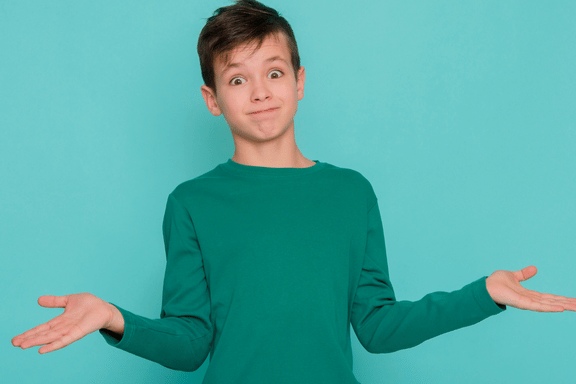Maintaining proper jaw alignment is crucial to a child’s overall oral health, impacting everything from their bite to their ability to speak clearly.
At Impact Orthodontics in Calgary, we specialize in early orthodontic treatment, including services aimed at correcting jaw alignment for children near me.
Our focus on treating younger patients allows us to guide natural growth, ensuring a healthier, straighter smile as they grow into their permanent teeth. This often involves the use of dental appliances in early orthodontic treatment.
In this blog, we’ll explore the importance of jaw alignment, the types of treatments available, and how early intervention can make a difference.
Understanding Jaw Alignment and Orthodontic Treatment
Jaw alignment plays a crucial role in orthodontic treatment, impacting not just the appearance of a child’s smile but their overall oral health.
Misaligned jaws can lead to a host of issues, including crooked teeth, tooth decay, and even problems with facial appearance.
Orthodontic treatment aims to correct these misalignments and align teeth properly, ensuring a healthier, more aesthetically pleasing smile.
There are several types of jaw alignment issues, such as underbites, overbites, and crossbites. An underbite occurs when the lower jaw extends beyond the upper jaw, while an overbite is when the upper jaw protrudes over the lower jaw. Crossbites happen when the upper and lower teeth do not align correctly.
Understanding the specific type of jaw alignment issue your child has is essential to determine the best course of orthodontic treatment.
Why Jaw Alignment is Essential for Children’s Health
When a child’s jaw is misaligned, it can lead to a variety of orthodontic and functional problems that extend far beyond just the appearance of their smile. Proper jaw alignment is critical for more than aesthetics—it affects how a child chews, speaks, and even how comfortable their jaw feels on a day-to-day basis.
One of the most common issues associated with misaligned jaws is crooked teeth. When the upper and lower teeth don’t meet properly, they can crowd together, causing difficulties in keeping them clean. This leads to a higher risk of tooth decay, cavities, and gum disease. Bite correction can help mitigate these risks by ensuring that the teeth are properly aligned and easier to clean.
Additionally, misalignment can cause wear and tear on the teeth and lead to chips, cracks, or even tooth loss in extreme cases. Over time, untreated misalignment can place undue stress on the jaw joints, leading to TMJ (temporomandibular joint) disorders that cause long-lasting pain and discomfort in the jaw, face, and neck.
Parents searching for jaw alignment for children near me often seek early solutions to prevent these complications and support their child’s confidence and health.
Signs Your Child May Need Orthodontic Care
As a parent, recognizing the signs that your child may need orthodontic care is important for early intervention.
Some common indicators include:
- Crooked or crowded teeth
- Difficulty chewing or biting
- Speech difficulties
- Jaw pain or clicking
- Issues with facial appearance
Early orthodontic treatment can address these problems before they become more severe. If you’ve been researching jaw alignment for children near me, it’s a sign that early intervention might be the best option for your child.
Treatment Options for Jaw Alignment: Braces, Appliances, and More
Orthodontic treatments for jaw alignment vary depending on the child’s needs and the severity of their case. Orthodontic appliances are often used in these treatments to achieve the desired results. At Impact Orthodontics, we offer several treatment options to align jaws and create straighter teeth.
Common options include:
- Traditional metal braces: These are still some of the most effective ways to align teeth and correct jaw alignment. Metal braces consist of brackets and wires that guide both the upper and lower teeth into their correct positions over time.
- Clear aligners: For patients who prefer a more discreet option, clear aligners offer a removable appliance that gradually shifts the teeth. These are great for minor adjustments in both upper and lower jaws.
- Surgical orthodontics: In some cases, a child may require surgical orthodontic intervention to adjust severe jaw misalignment. This is typically recommended when other treatments are not sufficient.
Regardless of the treatment plan, the goal is to ensure proper jaw alignment that supports your child’s overall oral health.
The Importance of Permanent Teeth in Orthodontic Care
Permanent teeth play a vital role in orthodontic care. Orthodontic treatment typically begins when most permanent teeth have erupted, usually around the ages of 11 to 13. However, some orthodontic issues, such as underbites and overbites, can be addressed even before all permanent teeth have come in.
Parents seeking jaw alignment for children near me often prioritize early intervention to prevent more severe misalignments.
Correcting Underbites and Overbites
Underbites and overbites are common orthodontic issues that can significantly impact a child’s oral health and facial appearance.
An underbite occurs when the lower teeth and jaw extend beyond the upper teeth and jaw, while an overbite happens when the upper teeth and jaw protrude over the lower teeth and jaw.
Orthodontic treatments, such as traditional metal braces, can effectively correct these issues. Correcting underbites and overbites not only improves the bite but also enhances the overall balance and symmetry of the face.
The Benefits of Early Orthodontic Treatment
Treating jaw alignment for children near me at an early age provides numerous long-term benefits. Early orthodontic treatment takes advantage of your child’s natural growth process, allowing for easier and more effective adjustments. Early treatment can guide jaw growth, ensuring proper development.
Starting treatment early can lead to shorter treatment times and save on costs by avoiding the need for more complex interventions, such as surgical orthodontics, in the future.
How Orthodontic Treatment Works for Jaw Alignment
Orthodontic treatment for jaw alignment for children near me typically involves the use of devices that apply gentle, continuous pressure to move both the teeth and the jaws into their correct positions.
These devices include braces, aligners, and other appliances designed to improve both function and aesthetics.
The Importance of a Free Consultation
When it comes to treating jaw alignment for children, the first step is scheduling a free consultation at Impact Orthodontics.
During this appointment, we conduct an exam, take x-rays, and discuss the best treatment options for your child’s needs.
What Parents Need to Know About Jaw Alignment for Children
Correcting jaw alignment for children near me early on can help your child avoid issues like TMJ disorders, speech problems, and uneven tooth wear. Early care ensures a healthier, more confident future for your child.
Customized Treatment Plans for Children
Every child’s jaw alignment needs are unique. At Impact Orthodontics, we design personalized treatment plans to address specific issues, ensuring your child’s best possible outcome.
Book an Appointment Today
If you’ve been searching for jaw alignment for children near me, Impact Orthodontics is here to help.
Contact us today to schedule your free consultation and take the first step toward a healthier, straighter smile for your child.











































































